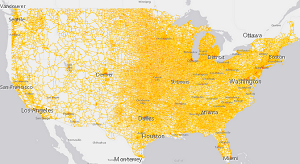
Gorai and Pal analyzed the noise level impact of iron ore mines over residential, commercial, and sensitive areas, in which it was found that noise levels were much higher than permitted by the national guidelines. A few significant studies performed earlier are discussed in this section.

In recent years, the study on the impact of noise exposure on human dwellings and dedicated establishments due to mining and its related activities is gaining more attention in India. Stage wise involvement of noise generating equipment’s in the mining activities For this reason, it is necessary to measure and evaluate the noise impact on the environment as well as on the surrounding. As a matter of fact, though only for a fraction of minutes, blasting produces enormous noise in open-cast mining, and the noise level from it can be reached up to 120 dB(A). Consequently, the use of modern equipment such as rock crusher, drilling, crushers, dumper, and trucks is the root cause of a significant increase of noise levels in and around the mining region. Thus, mining as well as the use of heavy vehicles for transportation is the major source of noise and a prime concern for the people residing nearby mining areas.įigure 1 shows the process of raw mineral extraction in open-cast mining and depicts the equipment used during each stage. Conveying transportation involving various types of vehicles is a key factor causing increase in the sound pressure levels, L p, in the residential zone. To meet this demand, raw minerals are exported in huge quantity via heavy vehicles through a transportation route that passes within and around human dwellings causing noise as well as air pollution. As a result, there is a rapid increase in the demand of minerals from such large industries, and mining has become vigorous. In Odisha, mining is the backbone of core industries, contributing to the growth of other crucial industries such as the power plant, steel plant, and other manufacturing plants. In addition, the intensity of noise generated during impulsive blasting is so high that it puts a negative impact on nearby human dwellings and dedicated establishments.Īccording to the Directorate of Mines and the Government of Odisha, India, there are more than 26 types of valuable minerals obtainable in the state. This may cause harm to the ears, sleep disturbance, and other health-related problems depending on the magnitude of the noise. Above all, open-cast mining involves several operations that produce annoying noise, which is caused due to drilling, rock crushing, blasting, etc. DGMS has specified that occupational noise level limits for an individual worker should not be more than 85 dB(A), which should be taken care of by the authority in charge of every mine. As a result of this, these studies may become significant in the coming years. In India, so far, noise mapping practices are not given much attention however, recently the Directorate General of Mines Safety (DGMS), India has made noise mapping compulsory in the mining region.

Noise mapping is considered as a significant document in noise impact assessment for urban, rural, and occupational regions among the European nations.


 0 kommentar(er)
0 kommentar(er)
